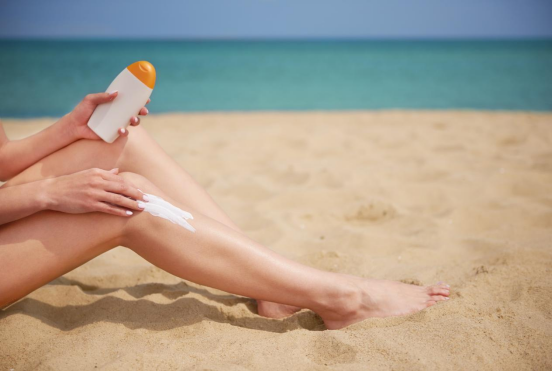
As customers become significantly wise about skincare, the dispute in between chemical and physical sunscreens remains to be a hot subject. While both offer important security versus the sun's harmful ultraviolet (UV) rays, physical sunscreens are typically lauded for their mild yet reliable solution, making them a preferred choice for those with delicate or responsive skin. The secret to their success depends on their active components, which develop a physical obstacle on the skin to shut out UV radiation. This article will look into the globe of physical sun blocks, focusing on their crucial components: zinc oxide and titanium dioxide.
Unlike their chemical equivalents, which soak up UV radiation and convert it into warm, physical sun blocks function by sitting on top of the skin to form a shield that deflects and scatters both UVA and UVB rays. This device is why they are typically referred to as "sunscreens." The main benefit of this approach is its prompt effectiveness upon application and the lower possibility of creating skin irritation, as the ingredients are not taken in into the skin.
The most popular component in the physical sunscreen family is Zinc Oxide. This giant mineral is distinct in its capability to offer broad-spectrum protection, meaning it properly safeguards the skin against the complete spectrum of UVA and UVB rays. UVA rays are responsible for premature aging, including wrinkles and great lines, while UVB rays are the main reason for sunburn. By offering detailed protection versus both, zinc oxide plays an essential duty in avoiding sunlight damage and minimizing the risk of skin cancer.
Furthermore, zinc oxide is renowned for its relaxing properties. It has actually been utilized for centuries to deal with small skin irritations, rashes, and burns, a testimony to its mild nature. This makes sun blocks formulated with zinc oxide a perfect selection for people with delicate skin, acne-prone skin, or problems like rosacea and dermatitis. Its non-comedogenic properties also indicate it is much less most likely to obstruct pores, an usual concern for those with oily or combination skin.
The other key player in the physical sun block group is Titanium Dioxide. This normally happening mineral is one more outstanding component for creating a physical obstacle versus UV rays. It is very reliable at mirroring and spreading UVB radiation, supplying durable security versus sunburn. While it supplies excellent security throughout the UVB spectrum, it is normally taken into consideration less effective against long-wave UVA rays contrasted to zinc oxide.
Consequently, titanium dioxide is often used combined with zinc oxide in sun block formulations. This combination produces a synergistic effect, boosting the total broad-spectrum security of the item. By leveraging the staminas of both ingredients, formulators can create a sun block that supplies extensive and reliable protection against the sunlight's harmful rays. Like zinc oxide, titanium dioxide is also gentle on the skin and is a suitable alternative for those with sensitive or easily irritated skin.
In recent years, improvements in formulation modern technology have resolved one of the first drawbacks of physical sunscreens: the thick, white actors they would certainly typically leave on the skin. Modern formulas currently use micronized or nano-sized bits of zinc oxide and titanium dioxide, which permits a more cosmetically stylish application without endangering their protective abilities. This suggests you can delight in the mild, reliable protection of a physical sunscreen without the telltale white deposit.
To conclude, physical sun blocks provide a trustworthy and gentle method to safeguard your skin from the sunlight. Their celebrity active ingredients, zinc oxide and titanium dioxide, operate in consistency to create a physical shield that deflects dangerous UVA and UVB rays. With their superb safety profile and suitability for all skin kinds, specifically sensitive skin, physical sun blocks are an awesome force in the battle against sunlight physical sunscreen ingredients damage. The following time you are Browse the sunscreen aisle, think about the powerful, protective, and skin-loving benefits of a physical solution.